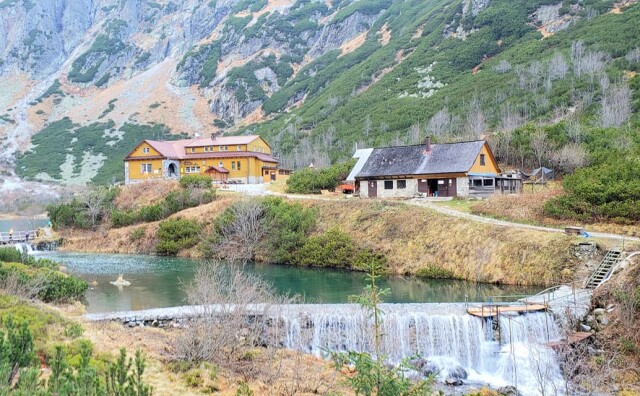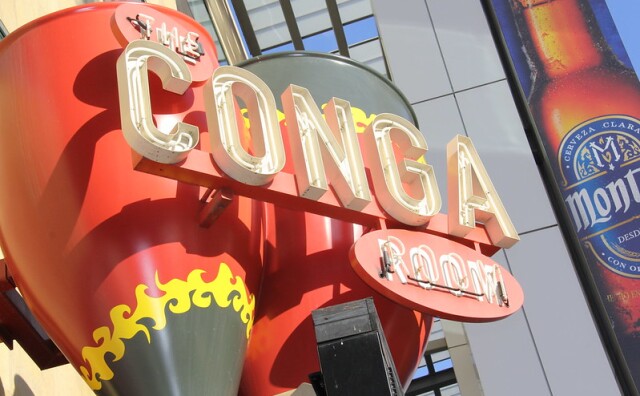This weekend, the Art of the Benshi, presented by The UCLA Film & Television Archive and the Tadashi Yanai Initiative for Globalizing Japanese Humanities, comes to Los Angeles.
It’s part of a world tour that’s also traveled to New York, Washington, D.C., and Chicago before heading to Tokyo next week.
But what, exactly, is benshi?

Benshi were the narrators of Japan's silent film era. These artists introduced films and also provided live narration, portraying characters, and articulating the on-screen action, filling theaters and enthralling audiences. Including in L.A.
And check out our LAist article here.
Storytellers of silent film
A benshi is a performer. They’re the narrators of Japanese silent films, acting out characters on stage against the backdrop of the screen, and interpreting the film for audiences. (For a modern day comparison, think about the actors during midnight showings of The Rocky Horror Picture Show.)
It’s a practice that dates back more than 100 years.
There were once 7,000 benshi in Japan, and the practice became global as Japanese immigrants established communities abroad.
UCLA professor of Japanese literature, and one of the tour’s organizers, Michael Emmerich, explains there’s a lot happening during a benshi performance.
Each performer actually writes their own script, which means that “if you see the same film with different benshi, you'll end up coming away with maybe a really different impression,” Emmerich says. “As part of this tour, we have the same film being screened three times … with each benshi performing a unique script. So you'll have a chance to see how much of an impact it makes.”
In 2019, Emmerich brought three benshi, including Ichiro Kataoka, to Los Angeles for a limited performance series in the Billy Wilder theater at the Hammer Museum. He describes the experience as transformative to his understanding of world cinema history.
“Ever since, I've been kind of, I don't know, an addict,” says Emmerich. “It's just such a marvelous way to experience silent film.”
Film history is LA history
The benshi originally came to L.A. in the early 1900s, as immigrant communities grew, and more cinema from Japan came to the U.S. The movies became a cheap place to socialize and escape from work. Between 1900 and 1930, many Japanese immigrants worked on farms, coming into town to sell crops or go shopping … and go to the movies.
“There's still people alive who actually can remember when that was happening in Little Tokyo,” Emmerich says.
A movie theater called the Fuji-kan opened in Little Tokyo in 1925 showcasing the benshi. Movie theaters like the International Theater and the Oriental Theater had come and gone from the area, and at the time of Fuji-Kan’s opening, there hadn’t been a theater in Little Tokyo for almost 10 years.

And in the 1920s, benshi were sometimes bigger stars than the actors in the films themselves, featured in newspapers and film journals.
“It's kind of a part of Little Tokyo history and of Los Angeles history that almost no one knows,” says Emmerich. “It's such a special thing to have a chance to experience it as a result of this tour.”
These silent films, ranging from melodramas to comedies to epics, and the benshi would do West Coast tours — performing in Gardena, Torrance, Santa Barbara — wherever there were enclaves of Japanese immigrants.
The Fuji-kan closed during World War II in 1941, when Japanese incarceration camps were established in California. The theater later reopened under new ownership and with a new name, the Linda Lea, for a few years, and then closed for good. It was demolished in the 1960s. That space downtown is now a bank and a parking lot.

Benshi today
There are currently about 15 benshi performing in Japan. Three of them are on this world tour, performing films like once-lost experimental horror film, A Page of Madness (1926), and the oldest surviving example of anime, The Dull Sword (1917).

The L.A. performances will be taking place in the Billy Wilder Theater at the Hammer Museum, and in the United Theatre (formerly the Ace Hotel). That’s a space that Ichiro Kataoka, one of the most prominent and highly regarded contemporary benshi, is looking forward to visiting.

“Personally, I'm extremely excited about performing at the United Theatre, because of the history it's got,” Kataoka says. “You know, it was opened with the involvement of Charlie Chaplin and Mary Pickford. So, as a performer, I am really, really excited to be there.”
The United Theater on Broadway was initially founded by D.W. Griffith, Douglas Fairbanks, Charlie Chaplin, and Mary Pickford as the United Artists Theatre.

The four silent film artists founded United Artists in 1919 as an independent studio to get around the stifling contracts of big studios at the time. The theater opened in 1927 as a space to showcase United Artists productions.
Kataoka’s excitement is understandable as two major elements of silent film history come together, starting this Friday, April 19.







